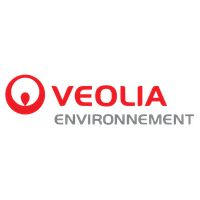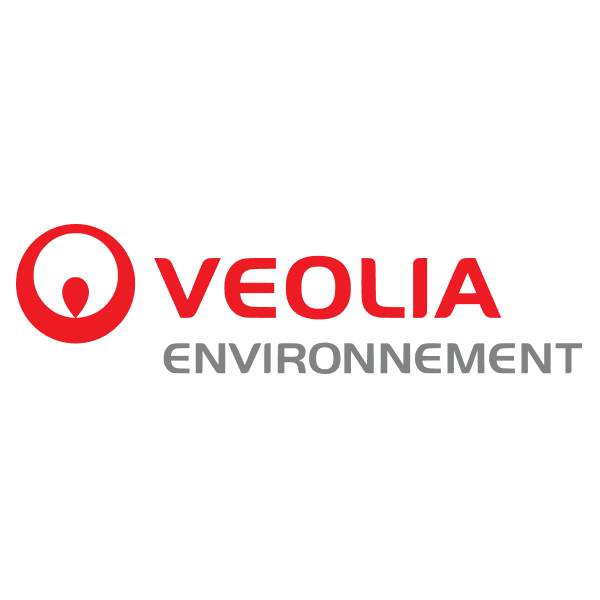
Veolia Environnement SA
PAR:VIE


| US |

|
Johnson & Johnson
NYSE:JNJ
|
Pharmaceuticals
|
| US |

|
Berkshire Hathaway Inc
NYSE:BRK.A
|
Financial Services
|
| US |

|
Bank of America Corp
NYSE:BAC
|
Banking
|
| US |

|
Mastercard Inc
NYSE:MA
|
Technology
|
| US |

|
UnitedHealth Group Inc
NYSE:UNH
|
Health Care
|
| US |

|
Exxon Mobil Corp
NYSE:XOM
|
Energy
|
| US |

|
Pfizer Inc
NYSE:PFE
|
Pharmaceuticals
|
| US |

|
Palantir Technologies Inc
NYSE:PLTR
|
Technology
|
| US |

|
Nike Inc
NYSE:NKE
|
Textiles, Apparel & Luxury Goods
|
| US |

|
Visa Inc
NYSE:V
|
Technology
|
| CN |

|
Alibaba Group Holding Ltd
NYSE:BABA
|
Retail
|
| US |

|
3M Co
NYSE:MMM
|
Industrial Conglomerates
|
| US |

|
JPMorgan Chase & Co
NYSE:JPM
|
Banking
|
| US |

|
Coca-Cola Co
NYSE:KO
|
Beverages
|
| US |

|
Walmart Inc
NYSE:WMT
|
Retail
|
| US |

|
Verizon Communications Inc
NYSE:VZ
|
Telecommunication
|
Utilize notes to systematically review your investment decisions. By reflecting on past outcomes, you can discern effective strategies and identify those that underperformed. This continuous feedback loop enables you to adapt and refine your approach, optimizing for future success.
Each note serves as a learning point, offering insights into your decision-making processes. Over time, you'll accumulate a personalized database of knowledge, enhancing your ability to make informed decisions quickly and effectively.
With a comprehensive record of your investment history at your fingertips, you can compare current opportunities against past experiences. This not only bolsters your confidence but also ensures that each decision is grounded in a well-documented rationale.
Do you really want to delete this note?
This action cannot be undone.

| 52 Week Range |
26.73
31.51
|
| Price Target |
|
We'll email you a reminder when the closing price reaches EUR.
Choose the stock you wish to monitor with a price alert.

|
Johnson & Johnson
NYSE:JNJ
|
US |

|
Berkshire Hathaway Inc
NYSE:BRK.A
|
US |

|
Bank of America Corp
NYSE:BAC
|
US |

|
Mastercard Inc
NYSE:MA
|
US |

|
UnitedHealth Group Inc
NYSE:UNH
|
US |

|
Exxon Mobil Corp
NYSE:XOM
|
US |

|
Pfizer Inc
NYSE:PFE
|
US |

|
Palantir Technologies Inc
NYSE:PLTR
|
US |

|
Nike Inc
NYSE:NKE
|
US |

|
Visa Inc
NYSE:V
|
US |

|
Alibaba Group Holding Ltd
NYSE:BABA
|
CN |

|
3M Co
NYSE:MMM
|
US |

|
JPMorgan Chase & Co
NYSE:JPM
|
US |

|
Coca-Cola Co
NYSE:KO
|
US |

|
Walmart Inc
NYSE:WMT
|
US |

|
Verizon Communications Inc
NYSE:VZ
|
US |
This alert will be permanently deleted.
 Veolia Environnement SA
Veolia Environnement SA
Veolia Environnement SA
Investor Relations
In the bustling world of environmental services, Veolia Environnement SA has carved a niche as a global leader in managing a plethora of essential yet challenging tasks. Founded in 1853, this French multinational has expanded its prowess across three vital sectors: water management, waste management, and energy services. At its core, Veolia's mission is to optimize resource use through innovative solutions and technology, positioning itself as an indispensable partner in sustainable development. The company's expertise ranges from wastewater treatment and environmental remediation to energy efficiency enhancements and waste recycling. With operations spanning across numerous countries, Veolia taps into local needs while leveraging its international experience, thereby securing revenue streams through long-term service contracts and strategic partnerships with municipalities, industries, and various organizations.
The company's business model thrives on its ability to offer integrated services that address complex environmental challenges while promoting ecological sustainability. Veolia's water segment, for instance, involves the collection, treatment, and distribution of drinking water, along with wastewater treatment and recycling—efforts that are vital for urban centers facing water scarcity. In waste management, the company is known for transforming non-recyclable waste into energy through innovative technologies, contributing to the circular economy. Lastly, Veolia's energy division specializes in operating energy plants and enhancing energy efficiency for buildings, which resonates strongly in an era focused on reducing carbon footprints. This multifaceted approach not only aligns Veolia with global sustainability goals but also ensures a steady cash flow from diverse yet interconnected business operations, positioning it well in an ever-increasing environmentally conscious market.

In the bustling world of environmental services, Veolia Environnement SA has carved a niche as a global leader in managing a plethora of essential yet challenging tasks. Founded in 1853, this French multinational has expanded its prowess across three vital sectors: water management, waste management, and energy services. At its core, Veolia's mission is to optimize resource use through innovative solutions and technology, positioning itself as an indispensable partner in sustainable development. The company's expertise ranges from wastewater treatment and environmental remediation to energy efficiency enhancements and waste recycling. With operations spanning across numerous countries, Veolia taps into local needs while leveraging its international experience, thereby securing revenue streams through long-term service contracts and strategic partnerships with municipalities, industries, and various organizations.
The company's business model thrives on its ability to offer integrated services that address complex environmental challenges while promoting ecological sustainability. Veolia's water segment, for instance, involves the collection, treatment, and distribution of drinking water, along with wastewater treatment and recycling—efforts that are vital for urban centers facing water scarcity. In waste management, the company is known for transforming non-recyclable waste into energy through innovative technologies, contributing to the circular economy. Lastly, Veolia's energy division specializes in operating energy plants and enhancing energy efficiency for buildings, which resonates strongly in an era focused on reducing carbon footprints. This multifaceted approach not only aligns Veolia with global sustainability goals but also ensures a steady cash flow from diverse yet interconnected business operations, positioning it well in an ever-increasing environmentally conscious market.





























 You don't have any saved screeners yet
You don't have any saved screeners yet
